11 Design Choices from the 90s That Don’t Belong in Modern Homes
The 90s were a unique time for interior design, filled with creativity and experimentation. But now, many of the design choices from that period simply do not hold up. What was once considered trendy is now seen as outdated in the context of today’s modern homes. Understanding which 90s styles no longer work can help you create a more timeless and refreshing space.
This post may contain affiliate links, which helps keep this content free. Please read our disclosure for more info.
Overuse of Oak Wood
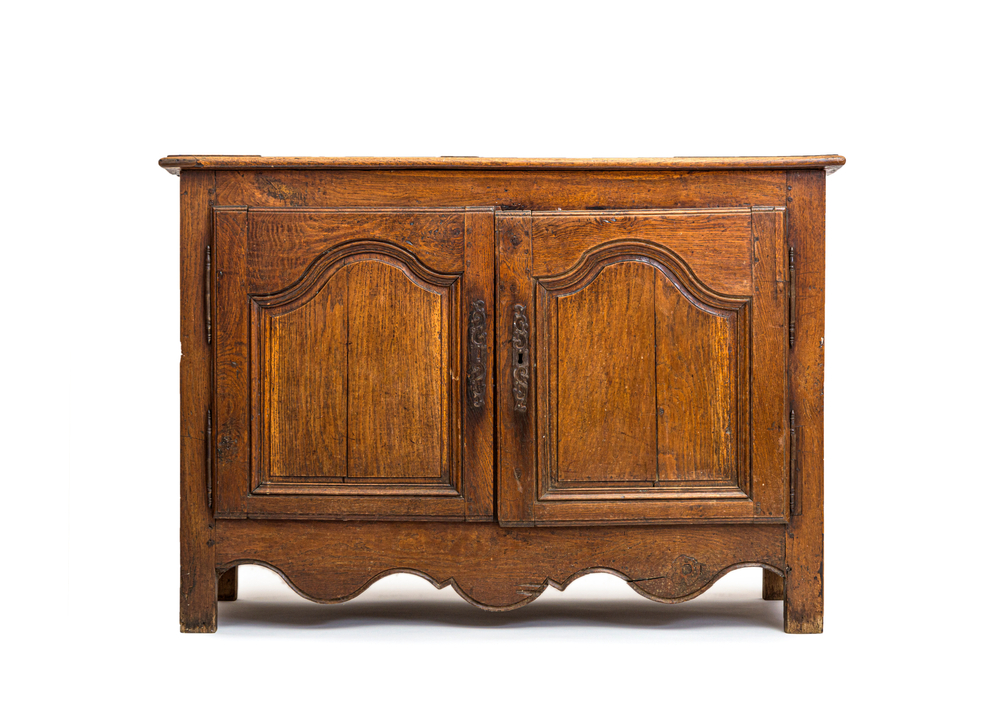
In the 90s, oak wood was a go-to material for everything from cabinets to furniture. Its heavy grain and yellowish tone were popular in many homes, but now it can make a room feel outdated. Today, people prefer lighter woods like maple or birch, which offer a fresher, more modern look. Oak tends to overpower a space, and its warmth can clash with the cooler tones favored in contemporary designs.
Many modern homes lean towards minimalism and clean lines, which oak does not easily fit. Its bulky and dated appearance feels out of place when compared to the sleek materials that dominate today’s home interiors. The trend has shifted towards more neutral tones and subtle textures that bring out a space’s simplicity. For a more modern home, consider swapping out oak for a lighter, more versatile wood or other materials like glass and metal.
Excessive Floral Patterns
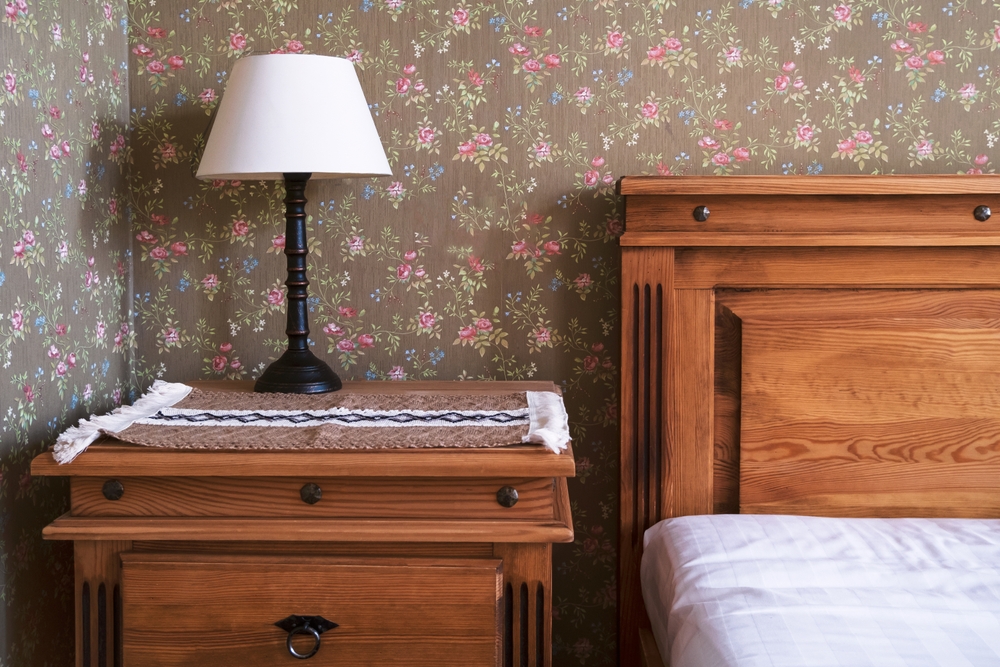
Floral patterns were a common sight in the 90s, especially in curtains, wallpaper, and upholstery. While they can add a touch of femininity or warmth, excessive floral prints often overwhelm a space. Today, cleaner and more subtle patterns are favored for their ability to blend seamlessly into various design styles. A floral-heavy room can look dated and busy, which detracts from the streamlined and calming effect that modern homes tend to emphasize.
Instead of using large, overpowering floral prints, contemporary designs favor smaller, geometric patterns or solid colors. These modern choices create balance and allow other elements of the room, such as artwork or furniture, to shine. The focus now is on open spaces and a lighter atmosphere. Moving away from the all-over floral print allows for more creative and timeless design options.
Heavy, Overstuffed Furniture
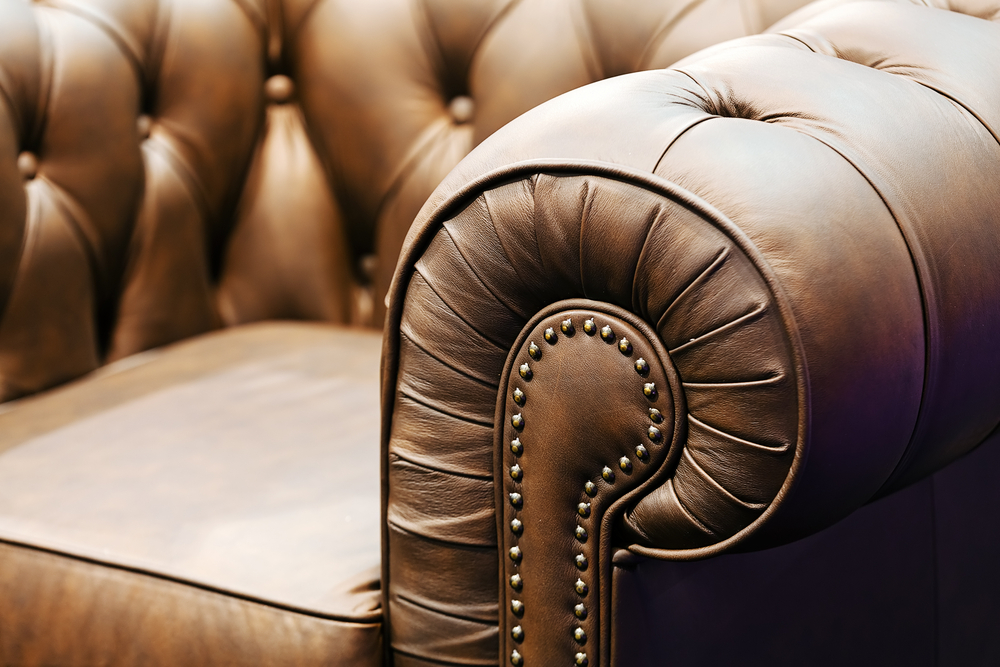
In the 90s, oversized furniture with heavy, overstuffed cushions was in style. While this type of furniture is comfortable, it tends to look bulky and takes up valuable space in modern homes. With the popularity of minimalism and more open floor plans, heavy furniture pieces are less practical today. They can crowd a room, making it feel smaller and more cramped, rather than open and airy.
Modern furniture design emphasizes sleek, lightweight pieces that allow for flexibility in room layouts. Sofa designs now focus on clean lines and slimmer profiles, offering comfort without overwhelming the space. This change has made it easier to create versatile living areas, where furniture can be rearranged and adapted to various needs. In modern homes, less is often more when it comes to furniture size and shape.
Wall-to-Wall Carpeting
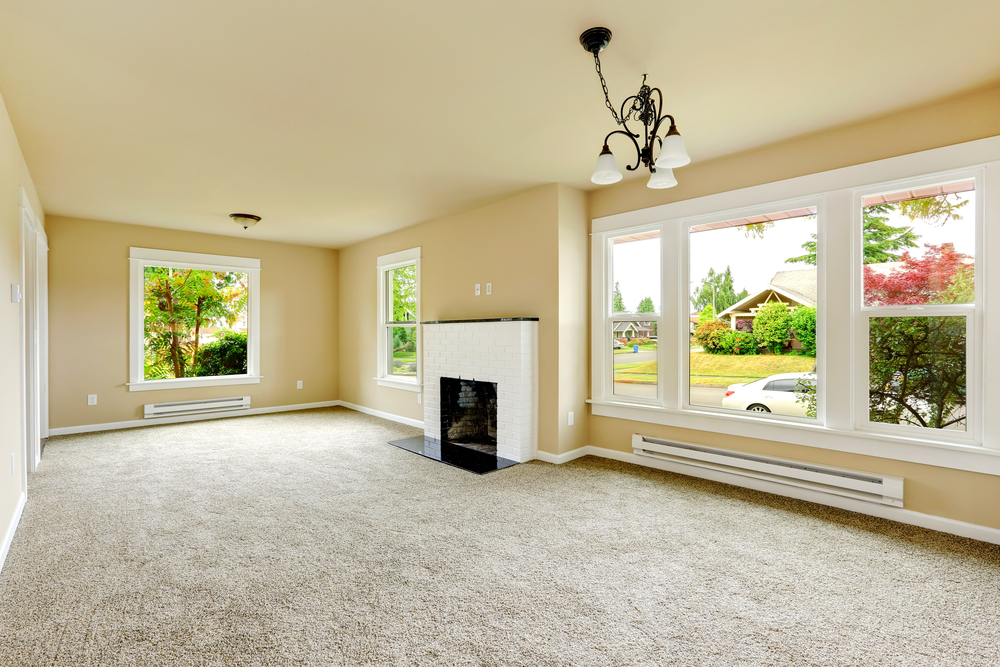
Wall-to-wall carpeting was a staple of 90s design, offering comfort and warmth underfoot. However, in modern homes, hardwood floors, tile, and polished concrete have become the go-to flooring options. Carpets, while soft, can trap dust, allergens, and stains, making them harder to maintain and less practical. The shift towards harder surfaces reflects a preference for cleanliness, durability, and a more contemporary aesthetic.
Additionally, hard floors allow for easier upkeep and contribute to the overall open and airy feeling of modern spaces. Carpeting can also feel outdated in comparison to the stylish, natural textures found in wood or stone flooring. Modern interiors also benefit from the variety of colors and finishes available in non-carpeted floors, which add to the overall design flexibility. Opting for hard flooring can improve both the look and functionality of a home.
Popcorn Ceilings

Popcorn ceilings, also known as acoustic ceilings, were widely used in the 90s due to their ability to hide imperfections and absorb sound. While practical, they now have a dated and unattractive look that no longer fits with modern interior design trends. Popcorn ceilings are also difficult to clean and can harbor dust, making them less appealing in today’s clean and polished homes. Modern ceilings tend to have smooth finishes that contribute to a more streamlined, airy feeling.
Removing popcorn ceilings and opting for a sleek, smooth surface can instantly refresh a space and make it feel more open. Smooth ceilings also allow for better lighting and highlight other features in the room. Additionally, smooth surfaces can enhance the acoustics of a room without the need for textured material. Replacing popcorn ceilings with modern alternatives will help bring your home up to date.
Too Much Matching Furniture
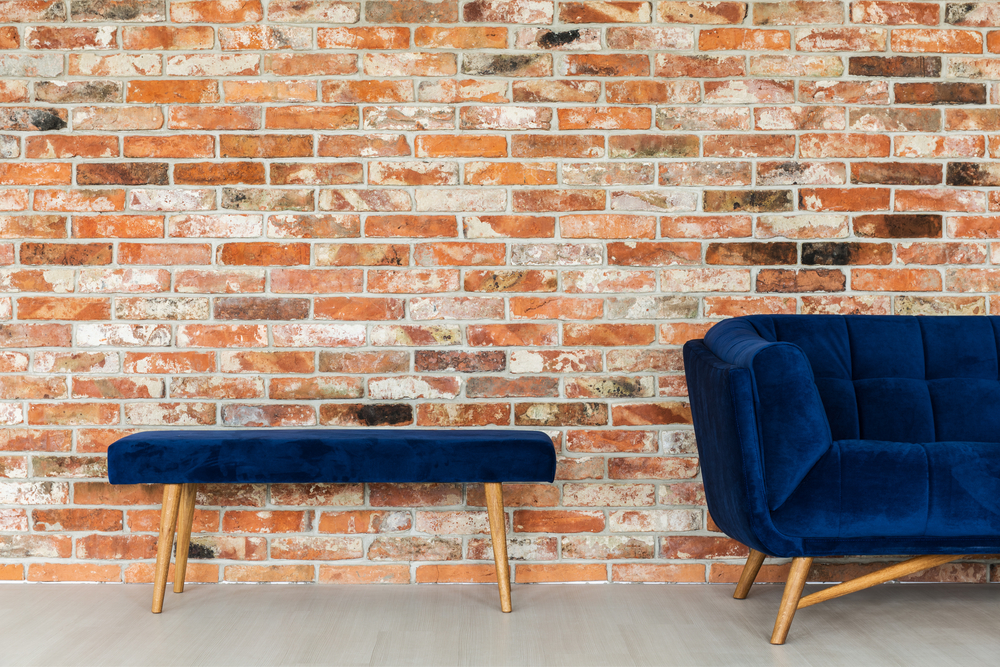
In the 90s, matching furniture sets were a common way to achieve a coordinated look in a room. However, today’s design philosophy encourages more eclectic and personalized spaces. Overmatching furniture can create a sterile, lifeless atmosphere, as it lacks the visual interest that comes from mixing different styles, textures, and colors. Modern homes are designed to have more character and reflect the personality of the inhabitants, rather than simply matching everything perfectly.
Mixing and matching furniture is a great way to achieve a more dynamic and inviting space. Modern design often incorporates a variety of materials, such as wood, metal, and glass, to add depth and dimension. This allows for a more flexible and unique design that feels less rigid and more comfortable. Breaking away from the all-matching look can help bring life and individuality to any room.
Cluttered Kitchens with Overdecorated Cabinets
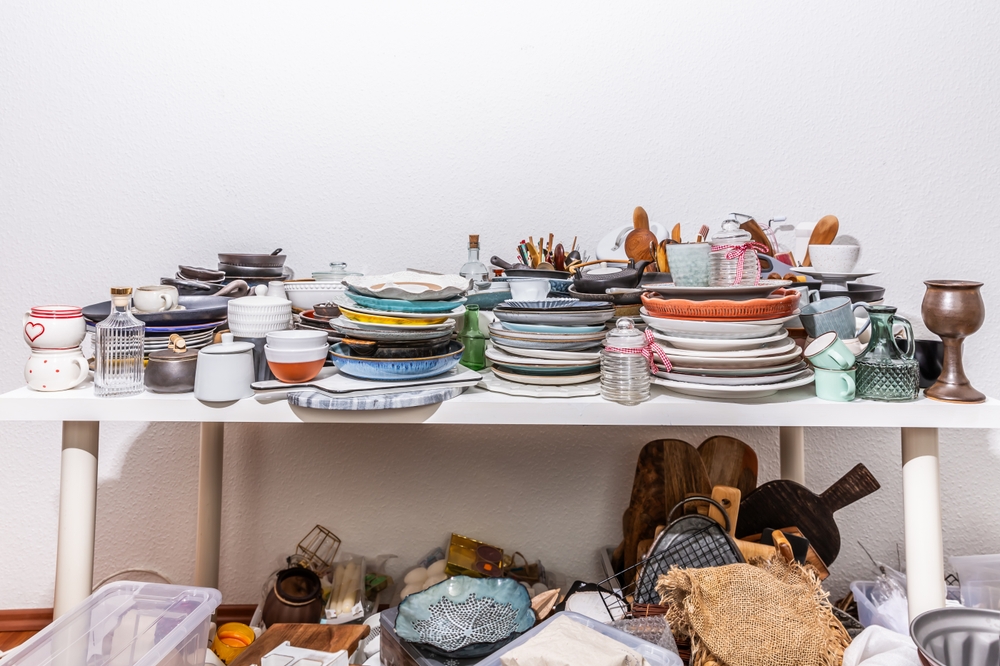
In the 90s, kitchens were often filled with excessive decorative details, from intricate cabinet trim to overcrowded countertops. This made the kitchen feel more like a cluttered space rather than a functional hub of the home. Modern kitchens favor simplicity and cleanliness, with streamlined cabinetry and clear surfaces. The idea is to reduce visual clutter to create a space that is both easy to maintain and pleasant to spend time in.
Today’s kitchens are designed to be practical, with storage solutions that keep countertops clear. This makes it easier to cook, clean, and entertain without distractions. Minimalist designs also make a kitchen feel more open and organized. Moving away from overly decorated cabinets allows for a more balanced and modern aesthetic that fits with contemporary living.
Wallpaper Borders
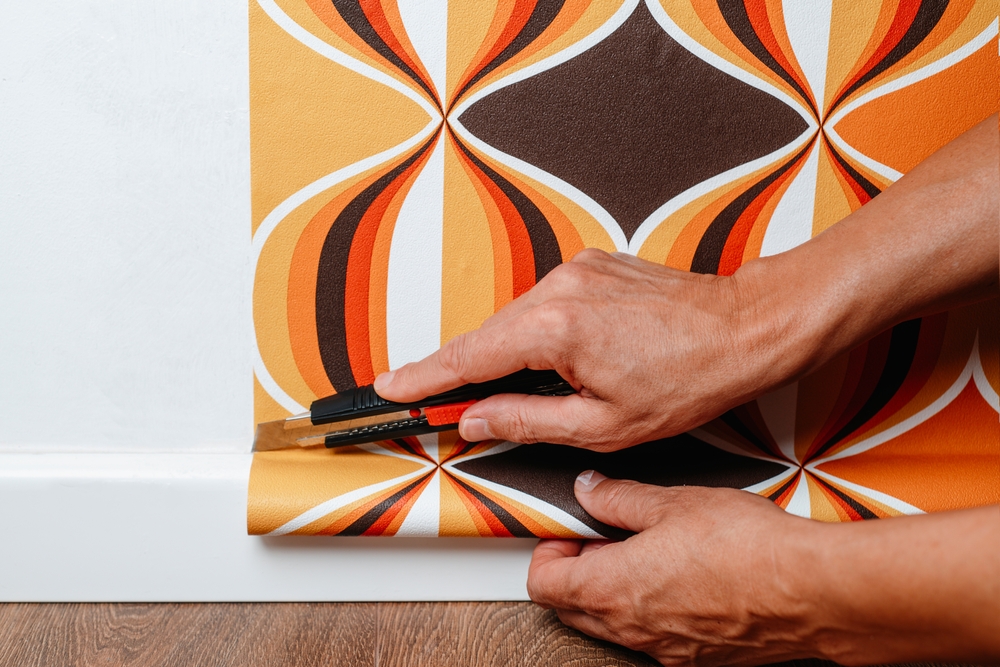
Wallpaper borders were once a popular way to add color and pattern to rooms without overwhelming the space. However, they often feel outdated and too fussy in modern homes. Borders can also break up a room’s flow and make it feel more compartmentalized. Today, walls are typically painted in solid colors or covered with large, bold patterns that create a more cohesive and seamless look.
Wallpaper borders can also be difficult to remove, and they often leave behind residue or marks. Modern design focuses on simplicity and clean lines, with wallpaper used sparingly as a statement feature rather than as a border. Instead of using borders, consider a feature wall or a minimalistic design that allows the room’s other elements to shine. Removing wallpaper borders can instantly update the look of a room.
Overly Themed Rooms
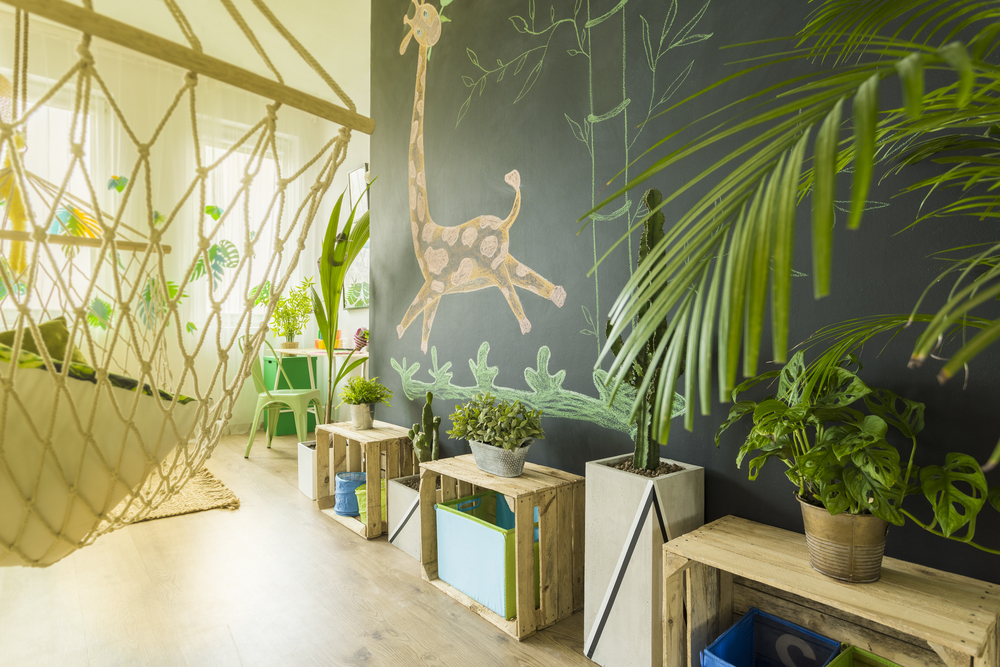
The 90s saw a rise in overly themed rooms, from tropical-inspired living rooms to country kitchens filled with cutesy decor. These rooms often felt more like a set than a comfortable, lived-in space. Today’s homes are designed to be more versatile, with a focus on creating spaces that can evolve over time. Themed rooms tend to be too rigid and can quickly become outdated as trends change.
Instead of following a single theme, modern design encourages a more flexible approach to decorating. Mixing different elements, such as vintage, modern, and rustic, can create a space that feels personal and inviting. The goal is to create a room that reflects your tastes without being locked into one specific style. Breaking free from overly themed rooms allows you to build a more timeless, adaptable interior.
Neon Lights
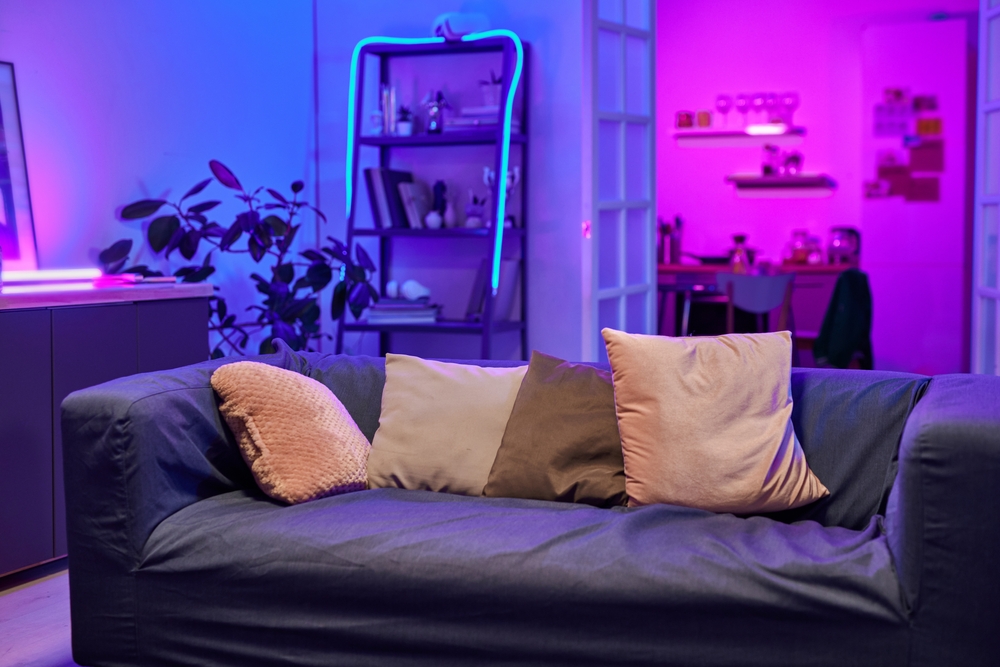
Neon lights were a bold statement in 90s interiors, often used for both functional and decorative purposes. While they were great for creating an energetic atmosphere, they do not fit into today’s design trends. The intense brightness and bold colors of neon lights can be overwhelming and detract from a more relaxed, modern aesthetic. Today, softer, more energy-efficient lighting options are preferred, with a focus on warm, natural light.
Modern design focuses on ambient lighting that complements the room’s color scheme and style. LED strips and pendant lights are popular alternatives to neon, offering a sleek, contemporary look. Neon lights can also be harsh on the eyes and are not as versatile in different types of decor. Replacing neon with more neutral and stylish lighting can instantly improve the mood of a space.
Dark, Heavy Window Treatments
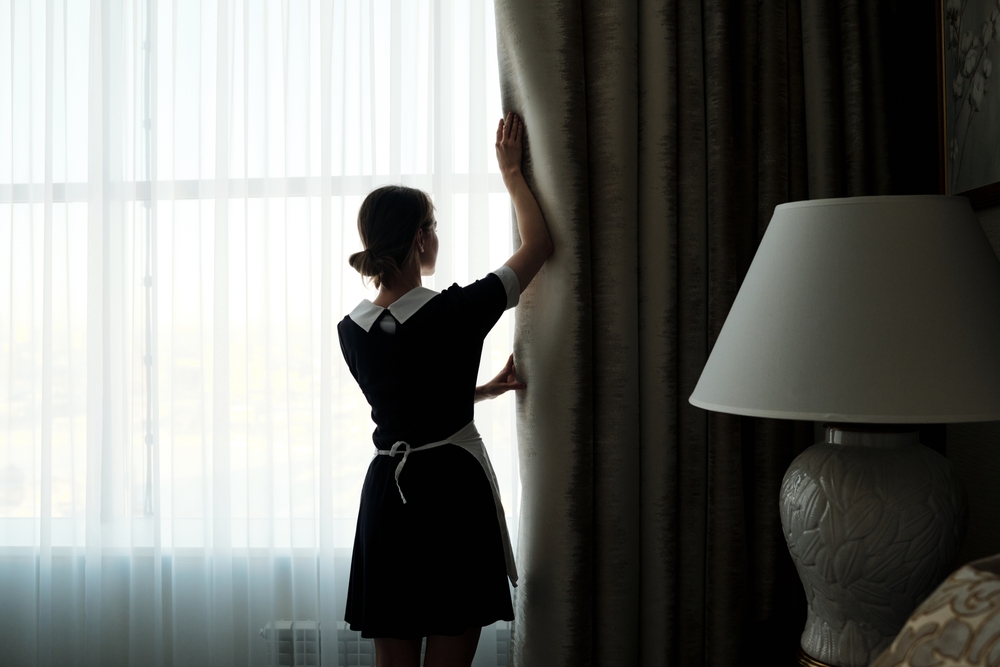
The 90s were known for heavy, dark curtains and drapes that often blocked out natural light. While these window treatments offered privacy, they also made rooms feel darker and more enclosed. Today, homeowners prefer lighter, more airy window coverings that allow for natural light to flood in. Sheer curtains, blinds, and shades have replaced heavy drapes, creating a more open and inviting space.
Lighter window treatments also provide more flexibility in decorating, as they complement a variety of color schemes and room sizes. They contribute to the modern preference for light-filled, open spaces. Thick, dark curtains often clash with contemporary furniture and create a more dated feel. Swapping out heavy drapes for lighter alternatives can make your home feel fresher and more aligned with current trends.
This article originally appeared on Avocadu.
